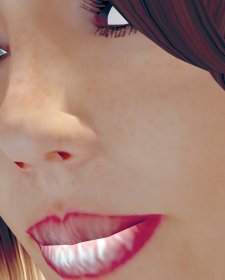That was the story of Vincent Lingiari; But this is the story of something much more; How power and privilege can not move a people; Who know where they stand and stand in the law. Paul Kelly and Kev Carmody
In 2000 the National Portrait Gallery purchased one of photographer Mervyn Bishop's most powerful photographs, showing Gough Whitlam and Vincent Lingiari at their historic meeting at Wattie's Creek in 1975. On a glaring day with a backdrop of brilliant blue sky and burning red soil, the then Prime Minister pours a handful of sand symbolically into the palm of the respected cultural leader and traditional land owner. There is a subtle auspiciousness in the presence of this photograph in the National Portrait Gallery's Oatley Gallery in Old Parliament House. It echoes through the halls of the building in which such history making events were officiated, out through the front doors and down those famous steps, irrevocably linked to the prime ministership of Whitlam. It projects across the street to the Aboriginal Tent Embassy, a valiant and visible reminder of the ongoing struggle for land rights, and down to the Vincent Lingiari Memorial between the National Portrait Gallery's Old Parliament House and Commonwealth Place sites. This striking image resonates in its contemporary setting.
The Wave Hill Cattle Station walk-off at Wattie's Creek, which led to the moment captured in this photograph, began as a wage strike on August 22nd, 1966. It evolved into an epic battle of wills between the Gurindji people who had occupied the land for hundreds of generations, and the British pastoral company owned by Lord Vestey, who had employed the Gurindji people as stockmen throughout the nineteenth century. But even as Vestey's and the government felt they were resolving the wage issue, the Gurindji people were only beginning a struggle that would last for many years. Vincent Lingiari, who had initiated the strike, continued to lead his people as they demanded ownership of their traditional lands, autonomy and equality under the eyes of the law. Said Lingiari, 'We want to live on our land, our way'.
The story of the Wave Hill walk-off, and how at Wattie's Creek the Gurindji 'sat themselves down', has been immortalised in the Paul Kelly and Kev Carmody song, From Little Things, Big Things Grow. The meeting of Vincent Lingiari and Gough Whitlam, illustrated so arrestingly by Mervyn Bishop's photograph, is described in the lyrics:
Eight years went by, eight long years of waiting
'Til one day a tall stranger appeared in the land
And he came with lawyers and he came with great ceremony
And through Vincent's fingers poured a handful of sand
From little things big things grow
From little things big things grow
The life and work of Vincent Lingiari was honoured last year at the site of that historic moment, in the 40th Anniversary of the Wave Hill Walk-Off and the 40 Years Freedom Day Festival. In his address at the Festival, Ted Egan said "It was he who put the words 'land rights' into the Australian vernacular. It was he who said we should all be mates. It was he who graciously offered friendship to all, when he finally won the battle to have his people recognised as the traditional owners of the land he inherited from his ancestors."
In 1988, two years after freehold title to Dagarugu was finally granted to the Gurindji people, Vincent Lingiari passed away, a leader and hero.
The photographer himself, Mervyn Bishop, is renowned as Australia's first professional Aboriginal photographer. Bishop's career began as a cadet photographer with Sydney Morning Herald in 1963 - when as an Indigenous Australian, he was not even recognised as a citizen in his own country. He spent the 1970's travelling the country documenting Aboriginal communities and social histories on behalf of the Department of Aboriginal Affairs. Since 1986 he has worked as a freelance photographer and lecturer, and most recently has been working with the State Records nsw Gallery's exhibition In Living Memory, liaising between the exhibition team and regional Aboriginal communities.
Quite apart from any milestones he may represent in the context of his Aboriginality, Bishop is also an outstandingly talented photographer. He captures in a split second the significance and the emotion of a moment, and expresses it with deeply considered composition, colour, texture and contrast. For his accomplishment with the camera, and his insightful subject matter, Bishop has frequently been recognised with awards, including News Photographer of the Year in 1971, and the Australia Council's Red Ochre Award in 2000. His photography has captured diverse aspects of Australian history, from the anti-Vietnam war protests in Sydney, to the Third World living conditions in Aboriginal communities while white Australia celebrated its Bicentennial.
In this photograph we see much more than a portrait of two great leaders. It is the story of something much more - a turning point in the history of a nation, the beginning of an acceptance of the wrongs of the past, and a first step on the long road to reconciliation of cultures. This is an image which turns our heads to the future, without turning our backs on the past.














